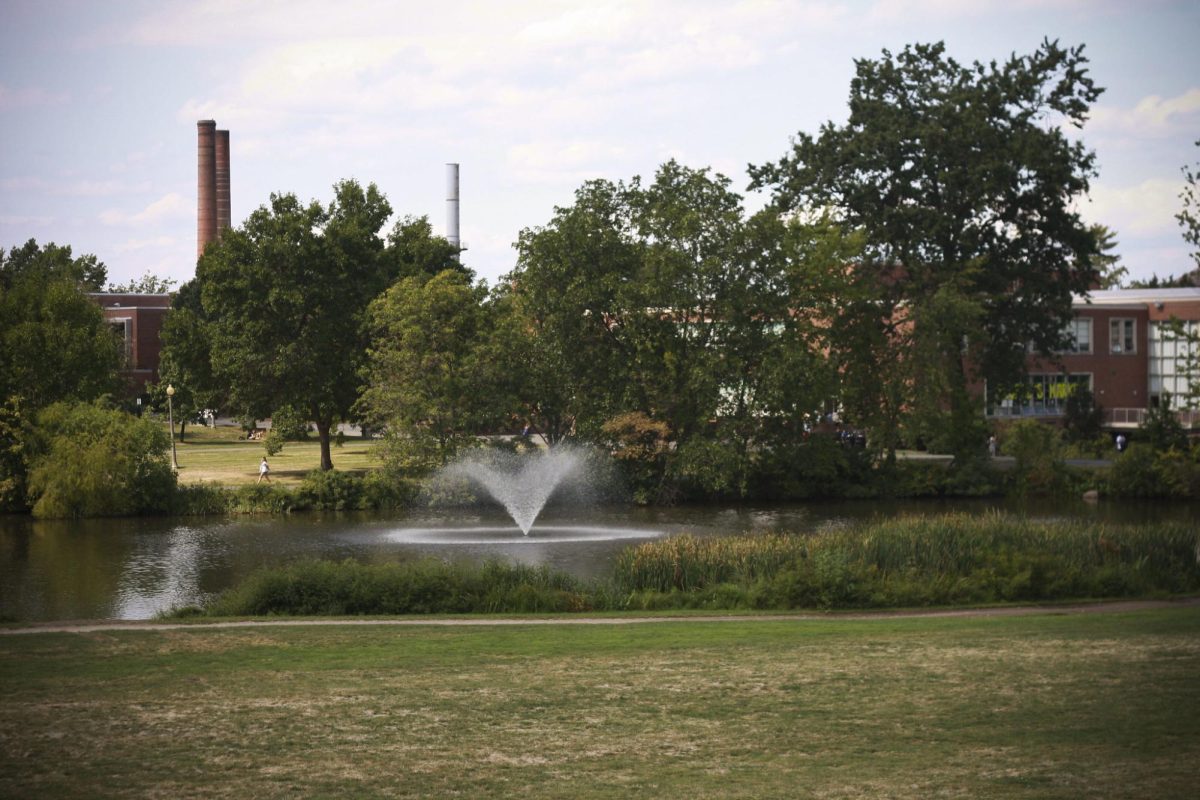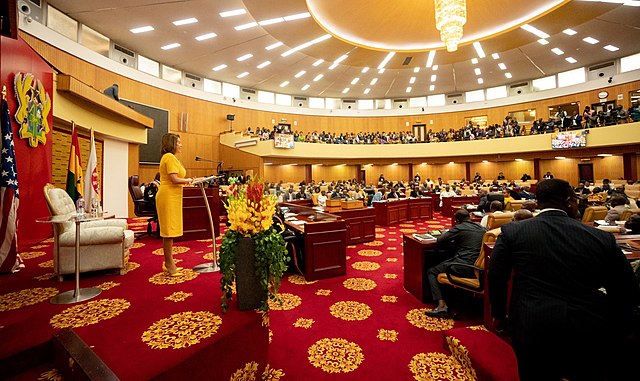
Occupy Wall Street is a movement trying to bring awareness and change to the fact that economic inequality in the United States is growing at an alarming rate and needs to be addressed. It is also a movement that is trying to take back the government for the people; to essentially restore the ‘true’ values upon which this country was established… to ensure ‘life, liberty, and the pursuit of happiness.’
The United States has relied upon the myth of American exceptionalism in order to justify many of its policies, yet what happens when the myth is exposed publicly as a fallacy? According to the Gini coefficient – which measures income equality and has been a standard scale for almost a century – the United States as of 2009 has one of the highest rates of income inequality among Organisation for Economic Co-operation and Development (OECD) member countries and a still frighteningly high ranking in the world.
The disappearing middle class is much more than just an economic problem and its consequences will be far reaching. Protesters and supporters of the Occupy movement have acknowledged the deteriorating state of our nation and have chosen the direction and location of the protests strategically. Occupy Wall Street claims that the division between Wall Street and the government – or, in other words, corporations and policy – needs to be firmly established; corporations should not have any special treatment or weight in the political process.
On Sept. 17, protesters began the physical occupation of Zuccotti Park in lower Manhattan as an expression of dissent and as a metaphor for people reclaiming what is rightly theirs – the democratic process. Since then the occupation has grown, not only within Manhattan, but worldwide.
The movement is approximately eight weeks old, yet mainstream media outlets have been incessantly critical of the movement for not being organized, not having defined clear goals and lacking leadership, among other points of contention. The fact of the matter is, if one was to go down to the protest in New York City, and most likely any one of the occupy protests occurring nationwide, he or she would find that there is indeed an astonishing amount of organization for a movement that is still developmentally in its infancy. Workshops happen on a daily basis and intellectual dialogue is taking place in the street.
There is a ‘working group’ for almost every facet of a community that one can think of: medical, comfort, de-escalation, finance, security, sanitation. Most amazingly, every evening there is the general assembly, in which direct democracy – something that according to historical models does not work – is implemented on a daily basis. A crowd of over 1,000 demonstrators gather at 7 p.m. each evening; proposals are made, amended and voted upon by anyone participating in the assembly.
While the movement is extremely organized and resilient, there are ominous signs coming out of Lower Manhattan. Something the media seems to have ignored is the internal dynamics of this evolving community within Zuccotti Park. There is a growing divisiveness and tension within the camp at Zuccotti Park which threatens to dismantle the occupation from within.
Unfortunately, what once seemed as if it could be a utopian, class-free autonomous city within a city, has now turned into seemingly two separate camps, split by clear class differences and geographic position. One side of the camp, which is closer in proximity to most of the Occupy Wall Street working group tables, is made up of people that regularly attend the general assembly, and participate in the working groups. On the southern side of the camp, which is referred to as “ghetto camp” by some protesters, there is a variety of societies forgotten: travelers, the homeless, addicts, pan-handlers, etc.
Plenty of people in the working groups have mentioned their disdain for “ghetto camp” stating that they are depleting resources, such as free food and items from the comfort station that are meant for participating protesters. It is true that a few weeks into the occupation food lines have trebled in size, costs have risen dramatically, and once plentiful items are no longer readily available. As the size of the camp increases, so have the instances of sexual assault, drug use, domestic violence, and other ills of any society. Many people are attributing these problems to the members of “ghetto camp.”
A woman who is a member of the sanitation working group advocated for an idea that has been gaining popularity among the north side of the camp: to link arms and essentially bulldoze the troublemakers out of Zuccotti. Her anger is justified. While she works day and night to clean up the camp and keep it in existence, there are many who aren’t contributing any of their time, but are bleeding the resources dry.
Yet how does one make and implement rules in a ‘public’ space? Can people realistically be kicked out of Zuccotti? In short, no. Advocating for a movement not just of the majority, but of the 99 percent, needs to acknowledge that this would include the drug addicts, the homeless, and other groups which society has turned its back on. Ideally, working groups like the de-escalation committee can, for the short-term, resolve conflict within the group, and keep morale of the protesters up; however, a long-term plan needs to be utilized in order to prevent the movement from imploding.
Money seems to be another contentious issue within the camp. Many of the protesters have personal donation booths. It is hard to differentiate official Occupy Wall Street donation boxes from those of the protesters. As supporters of the protest walk through the camp, they are engaged by many who have set up camp within Zuccotti. The problem with the personal donations has to do with the fact that a majority of the needs of the protesters are already met. Life within the camp is Spartan, but sustainable. Food, clothing, and barebones shelter is provided. Needs should be met before ‘wants.’
Perhaps, if money were to be kept out of Zuccotti, with all donations being kept to the Internet, it could solve a lot of the tensions within the camp. If protesters are pan-handling within the park for personal donations, they aren’t necessarily helping out with the working groups. Eradication of hard currency within the park could be replaced by an “Occupy Wall Street” dollar. These dollars would only be distributed to protesters after completing a shift at a working group. All pay would be the same, and the alternative currency could then be used to purchase what has otherwise been given out for free: food, clothing, and shelter. This would solve a majority of the problems and tensions within the park. It would enforce solidarity, and get rid of people leeching off the system. I proposed this idea in a de-escalation committee meeting, but it didn’t meet any approval.
If anything is to be said of the Occupy movement, it is that it shouldn’t be underestimated. Writing off the movement as being disorganized and without direction, as the media has done, is a grave mistake. The protesters are not going anywhere, and have already shown amazing resilience in the face of an intimidating police presence and harsh weather conditions.
While it is easy to point out the faults of the movement, one must also acknowledge the power it has. The Occupy movement has single handedly shifted the dialogue in this country from the debt crisis to jobs in one election year. It is also imperative to remember that this movement has gone from a small group of people on Sept. 17 in Lower Manhattan, to a worldwide movement with thousands of supporters. Whether or not you agree with the movement, it is imperative that you acknowledge its power and implications.
Zachary Kamel is a Collegian columnist. He can be reached at [email protected]













stan chaz • Nov 11, 2011 at 12:12 am
America used to work. The people had work. The system worked. Hey, EVEN the Congress used to work…(sometimes). God knows, it was far, far, far from perfect – but at least we all had some share in the struggles AND the rewards. But somewhere along the way, we lost our way. And now we seem to have an economy and a political system that works only for the rich. What they call “trickle down economics”… just leaves most of us out in the cold cold rain. We need to get back to what America was, and what it should be, and what it can be. Occupy Wall Street is no longer just a place called Zuccotti Park – Zuccotti Park is everywhere. You can try to pen us in, you can beat us and arrest us, you can mace and tear-gas us , and you can try to “permit” us to death….but you can’t kill an idea. You can’t keep down a people’s hopes and dreams for a better life…..a life with dignity and freedom….for us… for our kids. More power to Occupy Wall Street, as it spreads to every town and city – because OWS is us, and for us, and by us. It comes up from the grassroots, and it lifts us up in turn. With OWS America has found it’s voice, and that voice demands fairness and justice. This land IS our land! AND WE WANT IT BACK! …We want our lives back!… We want our future back! ….So why not take some time, find a quiet place somewhere, and consider this: Each of us has only one brief life…one chance…and many choices. It’s time to choose…and to act. If not now…then when? If not you, then… who? You DO have the power my friend….and the choice is yours.
j • Nov 10, 2011 at 11:06 pm
Ah yes, a true socialist utopia with mandatory wage labor for all and the extermination of parasites…